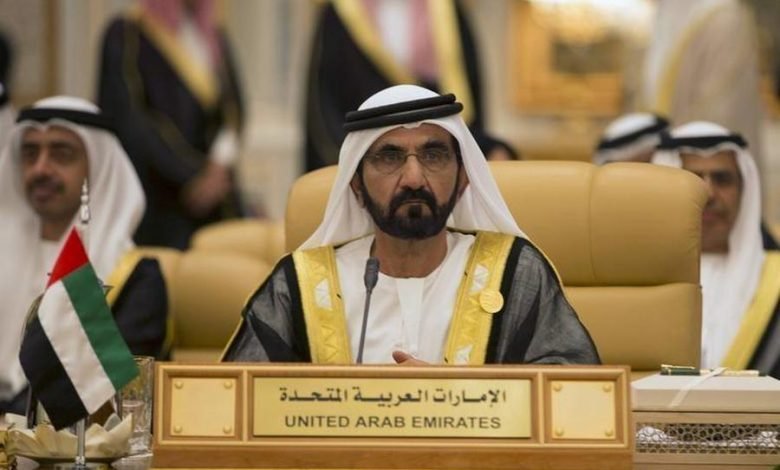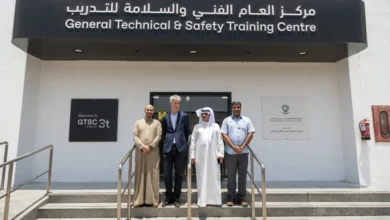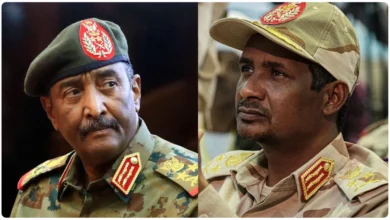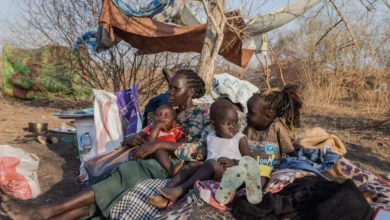
UAE Hits $1.1tn Trade Goal 4 Years Ahead of Schedule
UAE will reach its $1.1tn trade target 4 years early as the non-oil sector shows remarkable performance. Sheik Mohammed announced the country’s non-oil foreign trade grew by 18.6% year-on-year in Q1 2025, reaching AED 835 billion ($227.5 billion). These numbers substantially exceed the global average growth of 2-3%.
The UAE’s government set a bold target of AED 4 trillion ($1.1 trillion) in non-oil foreign trade by 2031, but the country will achieve this milestone in just two years. The nation’s non-oil exports have surged by 41% annually to AED 177.3 billion ($48.3 billion) in Q1 2025. UAE’s ruler’s vision has driven this economic shift, with the country’s GDP growing by 4% in 2024. The non-oil sector now makes up 75.5% of the national economy.
UAE achieves $1.1tn trade milestone four years early
UAE’s trade sector has grown exponentially, putting the country on track to reach its AED 4 trillion ($1.1 trillion) non-oil foreign trade target nearly four years early. This economic surge stands as a remarkable milestone in the nation’s strategy to diversify its economy.
The country’s foreign trade reached a historic AED 3 trillion by the end of 2024, showing a substantial 14.6% increase year-on-year. The growth rate soared seven times higher than the global average of 2% during this period. The Emirates has already achieved 75% of its 2031 target in just three years since establishing the goal.
Non-oil foreign trade continued its upward momentum in the first quarter of 2025, reaching AED 835.37 billion – an 18.6% increase from Q1 2024. Several key factors contributed to this resilient performance:
- Non-oil exports soared to AED 177.35 billion in Q1 2025, showing an exceptional 40.7% year-on-year increase
- Re-exports totaled AED 189.10 billion, growing by 6% annually
- Imports rose to AED 468.54 billion, up 17.2% year-on-year
The nation achieved a historic milestone as non-oil exports exceeded 21% of total non-oil foreign trade, outpacing both imports and re-exports. This fundamental change reflects the success of economic diversification policies.
The Comprehensive Economic Partnership Agreements (CEPAs) are vital components of this accelerated growth. These mutually beneficial alliances added AED 135 billion to the country’s non-oil trade in 2024, showing a remarkable 42% increase from the previous year.
UAE’s relationships with its top ten global trading partners strengthened substantially, growing by 20.2% in Q1 2025, compared to 16.9% growth with other nations. This economic expansion created strong foundations for businesses to invest and grow, boosting exports in various sectors.
Economic analysts now project that UAE will reach its AED 4.04 trillion non-oil foreign trade target by 2027, well ahead of the original 2031 deadline.
Sheik Mohammed credits leadership and national strategy
Image Source: ZAWYA
His Highness Sheik Mohammed bin Rashid Al Maktoum credits UAE’s remarkable trade success to President His Highness Sheik Mohamed bin Zayed Al Nahyan’s leadership and specialized government teams’ strategic work. Sheik Mohammed met with Foreign Trade and CEPA negotiation teams at Union House in Dubai to recognize their key role in taking UAE’s trade to new heights.
“Under the leadership of His Highness Sheik Mohamed bin Zayed Al Nahyan, the UAE’s economic growth is achieving unprecedented success,” Sheik Mohammed emphasized. “Indicators of social, economic, and strategic stability and prosperity are at their highest historical levels.”
The Vice President and Prime Minister applauded the team effort that helped UAE achieve a total trade volume of AED 5.23 trillion with a trade surplus of AED 490 billion in 2024. This achievement showcases the country’s economic strength despite global challenges.
Sheik Mohammed pointed out that UAE’s success comes from its forward-looking vision, reliable partnerships, and adaptable policies. “We are confident in an even brighter future, driven by the focused efforts of thousands of dedicated teams working to realize the UAE’s global ambitions,” he stated.
UAE leads the way in shaping international commerce rather than just following global trade trends. The nation continues to build trust in the international community as a strategic link between East and West.
UAE has signed 21 Comprehensive Economic Partnership Agreements (CEPAs) with countries in Asia, Africa, and Latin America. These regions represent about 25% of the world’s population. These agreements strengthen the “Projects of the 50” initiative to boost non-oil trade.
UAE now holds 41.4% of total goods exports in the Middle East region. The country ranks 11th globally in goods exports and 13th in services exports. This position shows how well the government has implemented its national economic diversification plans.
UAE strengthens trade ties with key global partners
Image Source: Middle East Briefing
UAE’s global trade network grows faster through mutually beneficial alliances with major economic partners. The country has reinforced its position as a global trade hub. Trade agreements with key partners have generated substantial growth in markets of all types.
Trade with India shows remarkable momentum. Non-oil trade rose by 20.5% while UAE exports to India soared by 75% by the end of 2024. The Comprehensive Economic Partnership Agreement (CEPA) implementation in May 2022 helped grow this partnership from AED 183.60 billion in 2021 to AED 312.11 billion in 2024. Trade with India grew by an impressive 31% in Q1 2025 alone.
Economic ties with Saudi Arabia have grown stronger significantly. Bilateral trade increased by 25% over four years and reached AED 110.16 billion by the end of 2023. Non-oil trade climbed to AED 75 billion in the first half of 2024, showing an 18% increase compared to the same period in 2023. Trade with Saudi Arabia achieved an extraordinary 127% growth rate in Q1 2025.
China’s partnership with UAE has deepened, accounting for 11.2% of UAE’s non-oil trade in the first half of 2024. Both nations traded over $42.4 billion in the first six months of 2024, showing approximately 3% growth compared to 2023. Bilateral trade reached AED 120 billion by the end of 2023.
The CEPA program yielded positive results across several countries. Turkey saw trade grow by over 11%, and Indonesia experienced a 15% increase in bilateral trade. Georgia stands out with a remarkable 56% boost in economic ties.
Logistics, clean and renewable energy, advanced technology, and financial services sectors benefited most from these CEPA agreements. These mutually beneficial alliances helped UAE’s government diversify its trade network while making steady progress toward ambitious trade targets.
Looking Ahead: UAE’s Trade Trajectory Reshapes Economic Landscape
UAE has reached its AED 4 trillion ($1.1 trillion) trade target four years early, which proves the country’s economic vision and strategic planning. This acceleration shows the success of its diversification strategy that reduced oil dependency and established the nation as a global trade powerhouse.
Trade growth rates have soared seven times higher than global averages, highlighting this exceptional achievement. Non-oil exports increased by 41% annually, which shows domestic industries’ maturation and growing competitiveness worldwide. These figures confirm that government policies to promote economic resilience work effectively.
UAE’s well-planned implementation of Complete Economic Partnership Agreements has brought substantial benefits. Trade relationships have flourished with key partners like India, Saudi Arabia, China, Turkey, Indonesia, and Georgia. These partnerships have positioned UAE as a vital link in global supply chains.
Sheik Mohammed bin Rashid Al Maktoum credits this soaring win to visionary leadership and dedicated government teams. Their coordinated efforts turned economic challenges into opportunities and strengthened UAE’s reputation as a trusted trade partner and investment destination.
Despite global economic uncertainties, UAE has shown remarkable adaptability. The country now handles 41.4% of total goods exports in the Middle East region and ranks 11th globally in goods exports. This position, combined with ongoing diversification efforts, gives UAE the tools to direct future economic changes.
UAE has transformed from an oil-dependent economy to a diversified trade hub, making it one of the most successful economic shifts in recent history. This early achievement of ambitious trade targets shows more than just statistical success – it represents a fundamental change in UAE’s economic identity and global influence.






